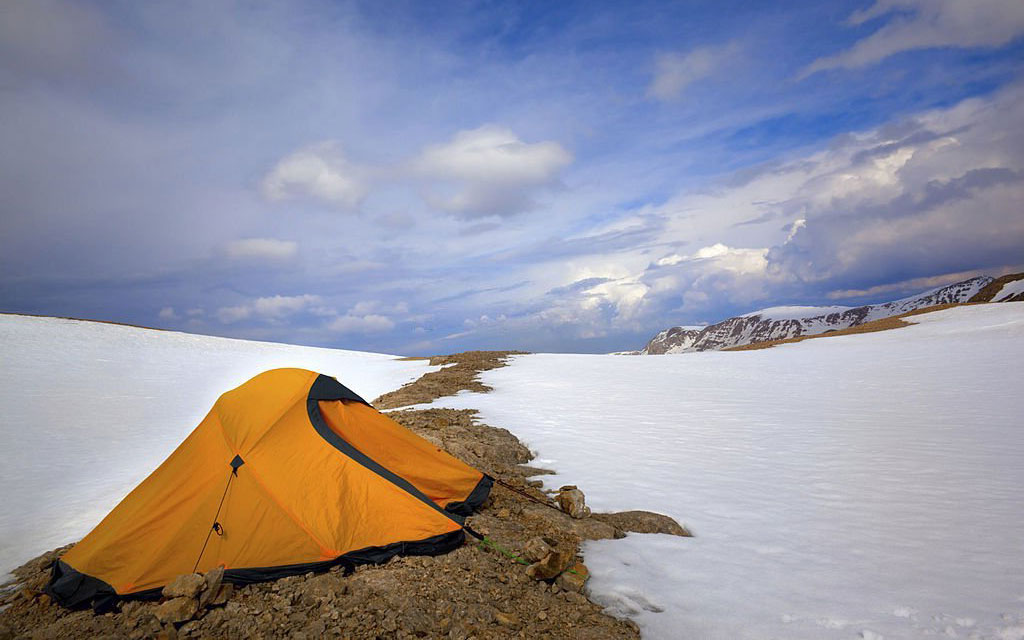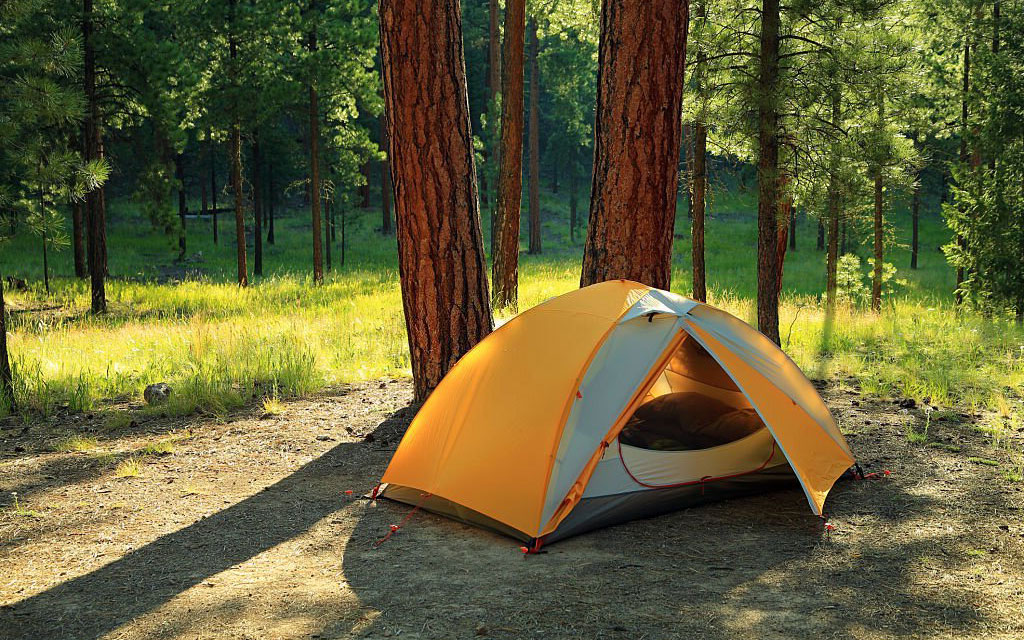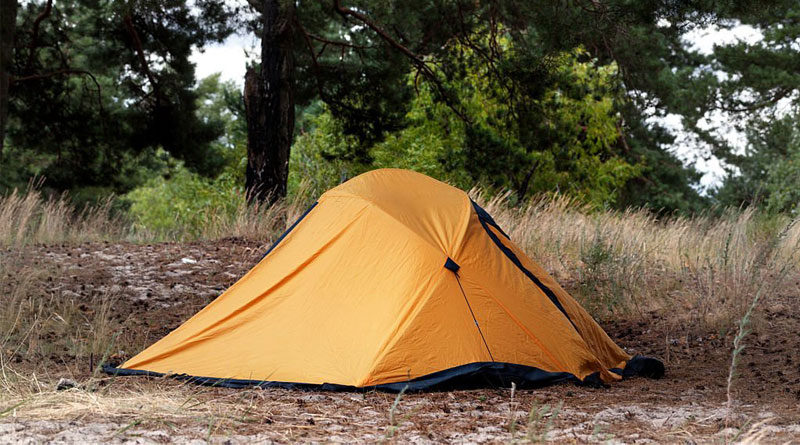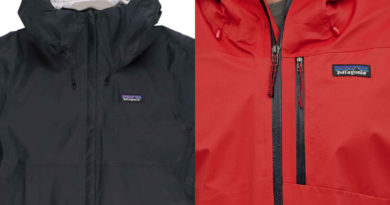Winter vs. Summer Tents: A Comparison
To a casual observer, the differences between a summer tent and a winter tent are subtle. However, once you begin to carefully observe and compare the two, these distinctions become clear. Winter tents are made of heavier, stiffer materials and have more guy-out points. Their shape prevents snow accumulation, and the frame keeps them from sagging, flapping, or bending in the wind. Mesh walls on summer tents allow for maximum ventilation. Their shapes are more box-like in order to maximize the space-to-weight ratio, and they are extremely light.
Below I have described the differences between the two types of tents. So keep reading to learn more.
Features of a winter tent

Winter tents are also referred to as four-season tents. The name suggests that you can use them year-round. Winter tents are made of more durable materials. They have a more durable higher denier material, usually nylon, that keeps snow and drafts out of the tent. The thick and well-insulated fabric makes the tent significantly heavier than a summer tent. The vestibules of the tent serve as a shelter for removing snow-covered items before entering the tent.
A winter tent’s poles are thicker and stiffer than those of a summer tent. A winter tent has a greater number of poles to provide rigid structural support. The poles form an A-shape, preventing snow accumulation on top of the tent and flapping, sagging, and bending in high-speed winds. To keep the tent standing without strain, external and internal support poles are frequently added. 4-season tents have more guy-out points to provide additional structural support.
Winter tents are available with single or double walls. Single tents work best in cool, dry climates and offer greater protection from high-speed drafts and strong winds. In the rain, sleet, and snow, double-wall tents provide better ventilation, reducing moisture and condensation inside the tent.
Winter tents are heavier than backpacking or summer tents, but there are lightweight options as well. However, you’d have to pay a premium for them. Even so, the lightest winter tent is heavier than the heaviest summer tent.
It is important to note that low-cost four-season tents are not designed for high-altitude camping. Winds and snow in the mountains can be extremely harsh. Special expedition tents, also known as 5-season tents, are available for those conditions. Winter tents are suitable for moderate snow and wind speeds that a summer tent cannot withstand.
Features of a summer tent

Summer tents are also referred to as three-season tents or backpacking tents. They are the most common tent types. The term “three-season” implies that you cannot use them in extremely cold weather with snow. Backpacking tents are so named because they are lightweight and easy to carry in a backpack.
Summer tents are intended for use during the months of spring, summer, and fall. However, you can use 3-season tents all year in warmer climates, such as the southern United States. Summer tents are made of lighter-weight materials with low denier fabric. Summer tent walls are frequently all mesh to maximize ventilation and prevent condensation and moisture buildup.
The mesh design of the tent also provides bug protection as well as ventilation. A summer tent has fewer poles that are thin and light in order to save weight. The poles’ structure includes bows and bends to create a more box-like shape that optimizes the interior space-to-weight ratio. The fewer poles provide less structural support but are quick and simple to install.
The summer tent’s shape is designed in such a way that it effectively keeps the rain off the tent. However, the shape allows snow to accumulate on top of the tent, potentially crushing it in the worst-case scenario.
Most summer tents have two walls for better ventilation. A removable rainfly with mosquito netting is also included. While the mesh walls allow for maximum ventilation, the rainfly provides rain protection. Summer tents are more or less waterproof on the outside, but condensation is still an issue on hot and humid days. Try to keep the tent ventilated and moisture-free.
Can you use a summer tent in winter?
You certainly can. You can camp anywhere and in any condition you want. However, as the adage goes, “just because you can, doesn’t mean you should.” While summer or three-season tents can be used in the winter, it also depends on what you mean by winter. As previously stated, you can use a summer tent all year in the southern United States.
Except for the snow, many summer tents can withstand most normal weather conditions. Heavy storms and strong winds are in another league entirely, so don’t bother. It is much easier to warm up a cool tent than it is to cool it down. You can also use a 3-season tent in the winter with enough insulation, such as warm clothes, sleeping bags, sleeping pads, and so on. However, unless you are an expert and know what you are doing, it will not be a pleasant experience.
You’d have a terribly challenging time if it snowed. Summer tents are not designed to withstand snowfall. They can, however, work after it has lightly snowed, but only lightly. They will not function in feet of snow.
Can you use a winter tent in summer?
As previously stated, it is easier to warm up a cooler tent than it is to cool down a warmer tent. Yes, you can use winter tents in the summer. The term “four-season” implies that you can use it all year. However, it will not be a pleasant experience.
But, then, what exactly do you mean by summer? Summer in the mountains is not the same as summer in tropical forests or deserts. If you plan to camp in a tropical forest or a desert during the summer, you should invest in a proper 3-season tent. There are also inexpensive summer tents that will last you 1-2 seasons if you only camp in the summer. You also tent a summer tent.
However, if you intend to use a winter tent in the summer, you will encounter the following issues:
- The main disadvantage of winter tents is their weight. Winter tents typically weigh 6 – 6.5 pounds, which is nearly double the weight of a typical backpacking tent. The rest of your belongings will add weight. Carrying a winter tent in the heat of summer would be more difficult. Walking for miles to get to the campsite would quickly tire you out.
- Another major issue with four-season tents is poor ventilation. 4-season tents are designed to keep heat in during cold nights, as well as in summer evenings. Of course, you won’t get a tent that works in both the desert heat and the cold mountains.
- 4-season tents are not designed to allow air to pass through. They have vents and windows, but they lack the mesh walls of a 3-season tent. It can be difficult to cool down the tent.
- Condensation is another issue caused by poor ventilation. In the summer, condensation is an annoyance. You can’t completely eliminate it, but you can significantly reduce it to keep your gear from getting wet. The best way to do so is with good airflow, which is the opposite of what winter tents are designed for.
Conclusion
There are numerous differences between a summer and winter tent that are not immediately apparent. Both types of tents are designed to withstand various types of weather. If you believe that just because a tent is labeled as 4-season means it can be used all year, you are mistaken. Likewise, do not make the mistake of using summer in the winter.
Winter tents are designed to withstand harsh weather conditions such as strong winds and light snow. However, winter tents trap heat, which is a problem in the summer. Summer tents are light and vulnerable to strong winds and harsh weather. Summer tents maximize ventilation, which is a problem in the cold winds of winter. You simply cannot find a tent that works in both the hot desert and the cold mountains.




